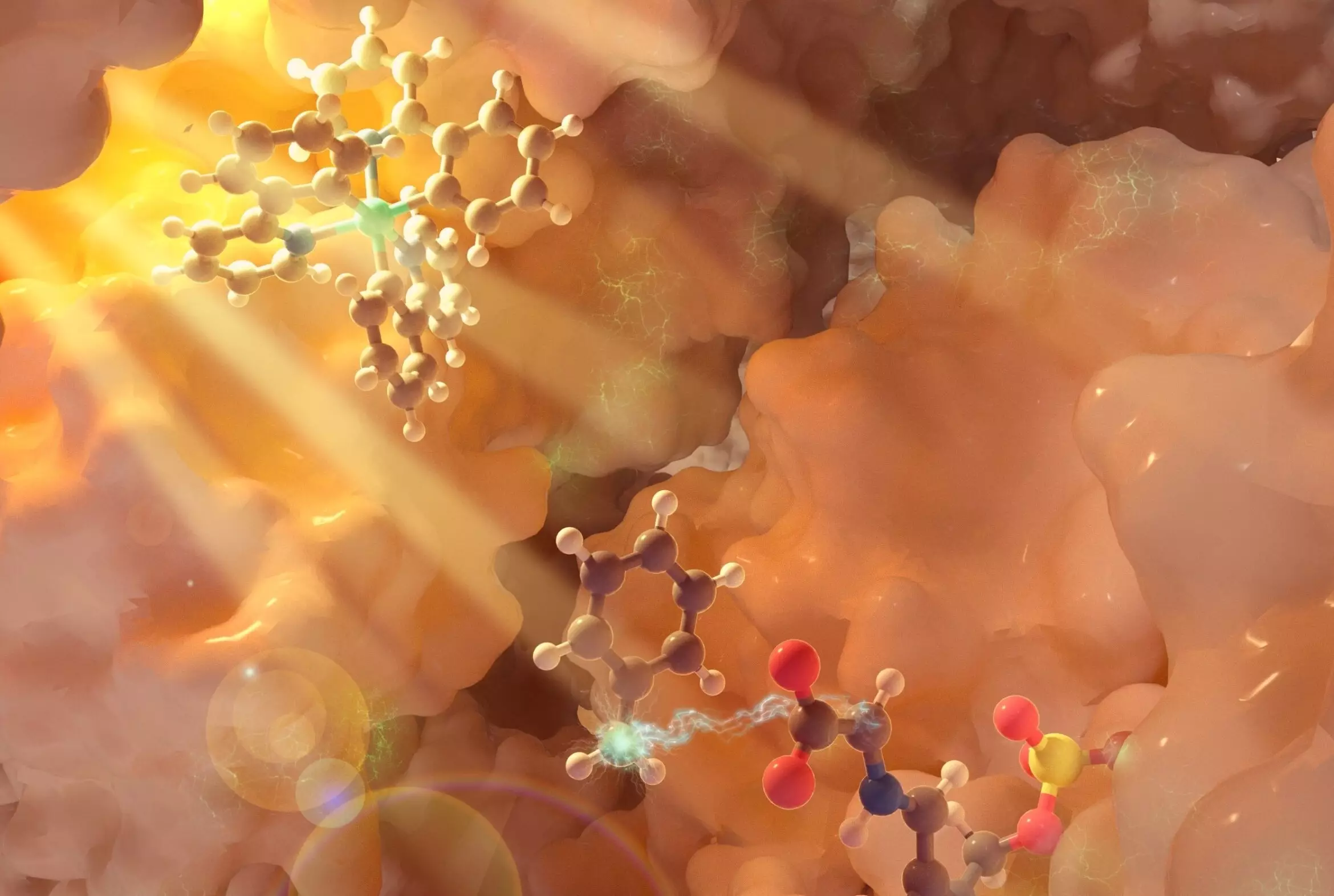Recent research conducted by UC Santa Barbara and the University of Pittsburgh has shed light on the potential of using photobiocatalysis to expand the range of chemical reactions available to scientists. In a groundbreaking paper published in the journal Nature, chemistry professor Yang Yang and his team explore a method that utilizes light to produce non-canonical amino acids. These amino acids are essential building blocks for peptide therapeutics, bioactive natural products, and innovative functional proteins. This approach represents a significant step forward in the field of biocatalysis, offering the possibility of designing entirely new enzymatic reactions with far-reaching implications for both chemistry and biology.
Traditionally, biocatalysis has focused on optimizing natural enzyme functions or repurposing existing enzymes to facilitate synthetic chemistry. However, despite years of research in this area, only a few examples of enzymatic reactions that are entirely novel to both nature and synthetic chemistry have been discovered. Professor Yang emphasizes the importance of uncovering new enzymatic reactions and exploring new modes of enzyme catalysis. This quest for innovation has led the research team to explore the field of photobiocatalysis, where enzymes are activated by light to drive chemical transformations. By leveraging the selectivity of enzymes and the sustainability of light, researchers aim to develop novel processes such as the production of non-canonical amino acids.
In their study, the team focused on pyridoxal-phosphate (PLP)-dependent enzymes, a diverse group of enzymes involved in amino acid metabolism. By creating an intricate triple catalytic cycle, the researchers were able to combine the photochemical capabilities of an iridium-based photocatalyst with the enzymatic modifications carried out by PLP enzymes. This collaborative approach enabled the generation of free radicals that interacted with enzyme intermediates to facilitate the production of non-canonical amino acids. By introducing new carbon-carbon bonds to common amino acid structures, the researchers were able to enhance the functionality and versatility of these essential building blocks.
One of the key advantages of photobiocatalysis is its ability to drive complex chemical transformations with high efficiency and selectivity. The process not only streamlines the production of non-canonical amino acids but also eliminates the need for cumbersome protecting groups that are commonly used in traditional organic synthesis. This innovative approach opens up new possibilities for designing novel amino acids with unique properties that could serve as the basis for developing cutting-edge therapeutics and natural products. By harnessing the synergistic effects of both photocatalysts and enzymes, researchers can explore the full potential of this emerging field of chemistry.
As Professor Yang’s group continues to investigate the interactions between photocatalysts and enzymes, the potential for further advancements in photobiocatalysis becomes increasingly evident. By refining the collaboration between these two catalysts, researchers hope to unlock new pathways for chemical synthesis and molecular design. The discovery of radical-mediated alpha functionalization of amino acid substrates represents a significant milestone in the field of biocatalysis, paving the way for future innovations in enzyme engineering and synthetic chemistry. Ultimately, the integration of light-driven processes with enzymatic transformations holds great promise for accelerating the development of novel chemical reactions and expanding the chemical toolbox available to scientists.


Leave a Reply